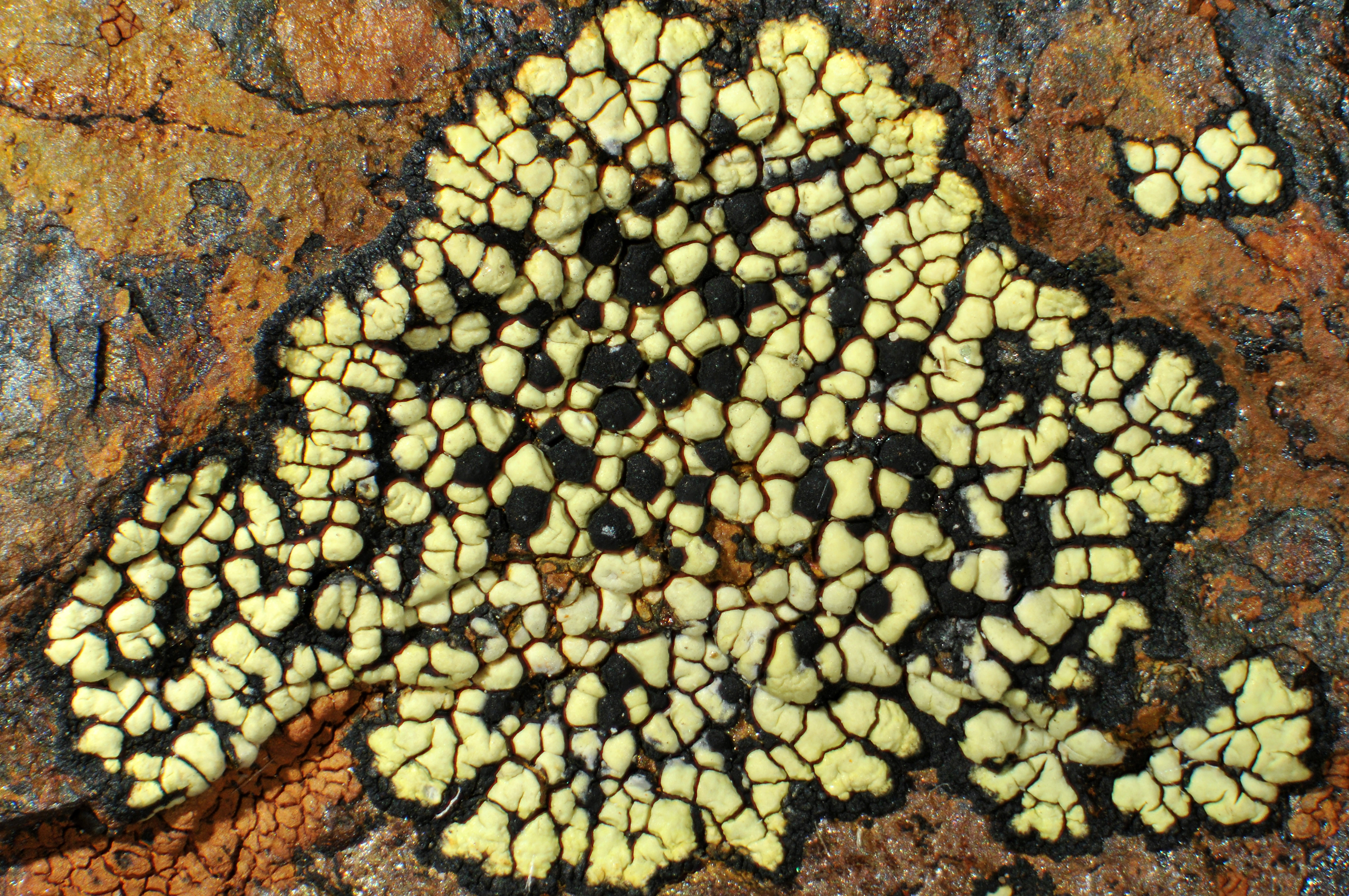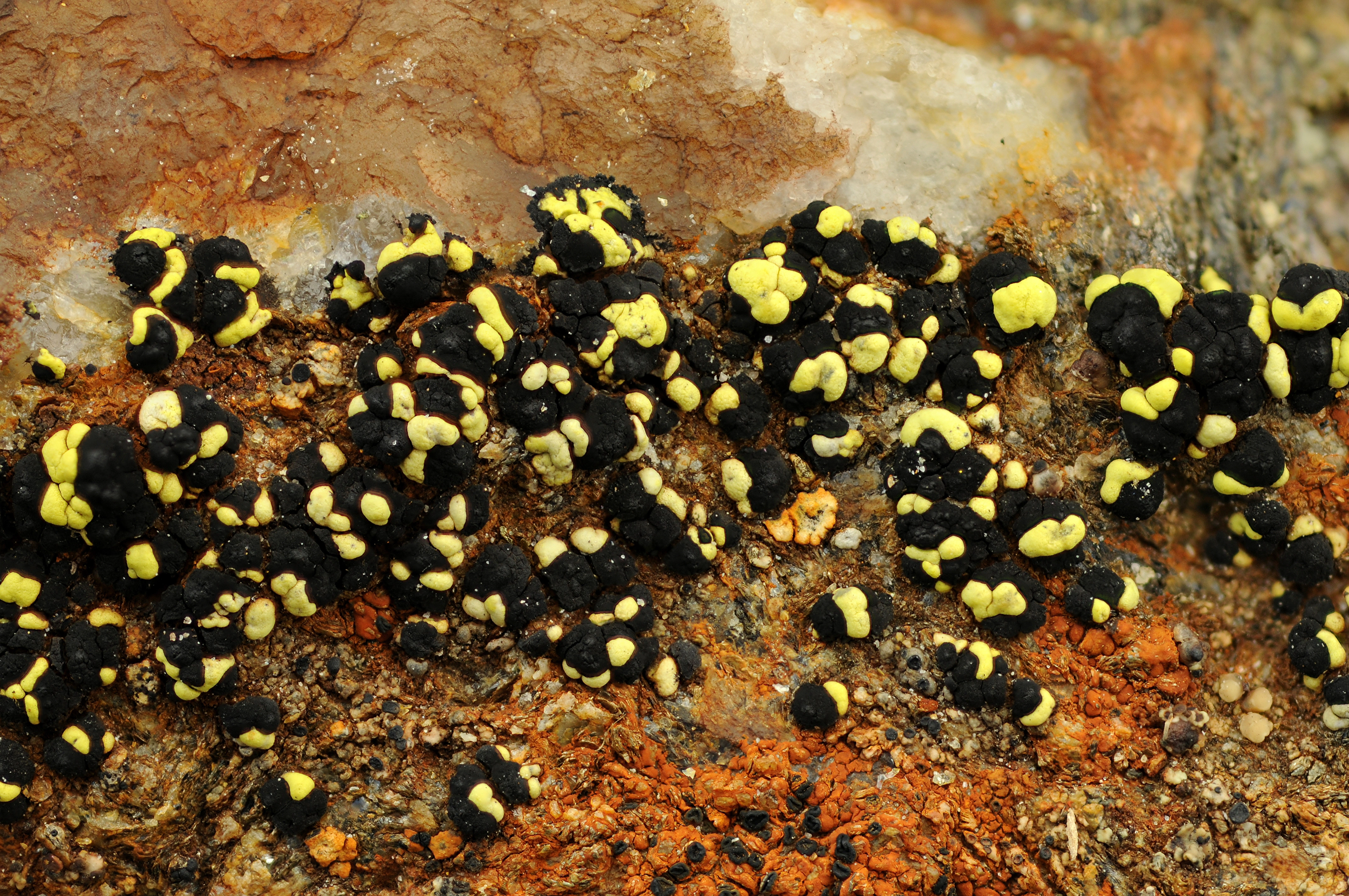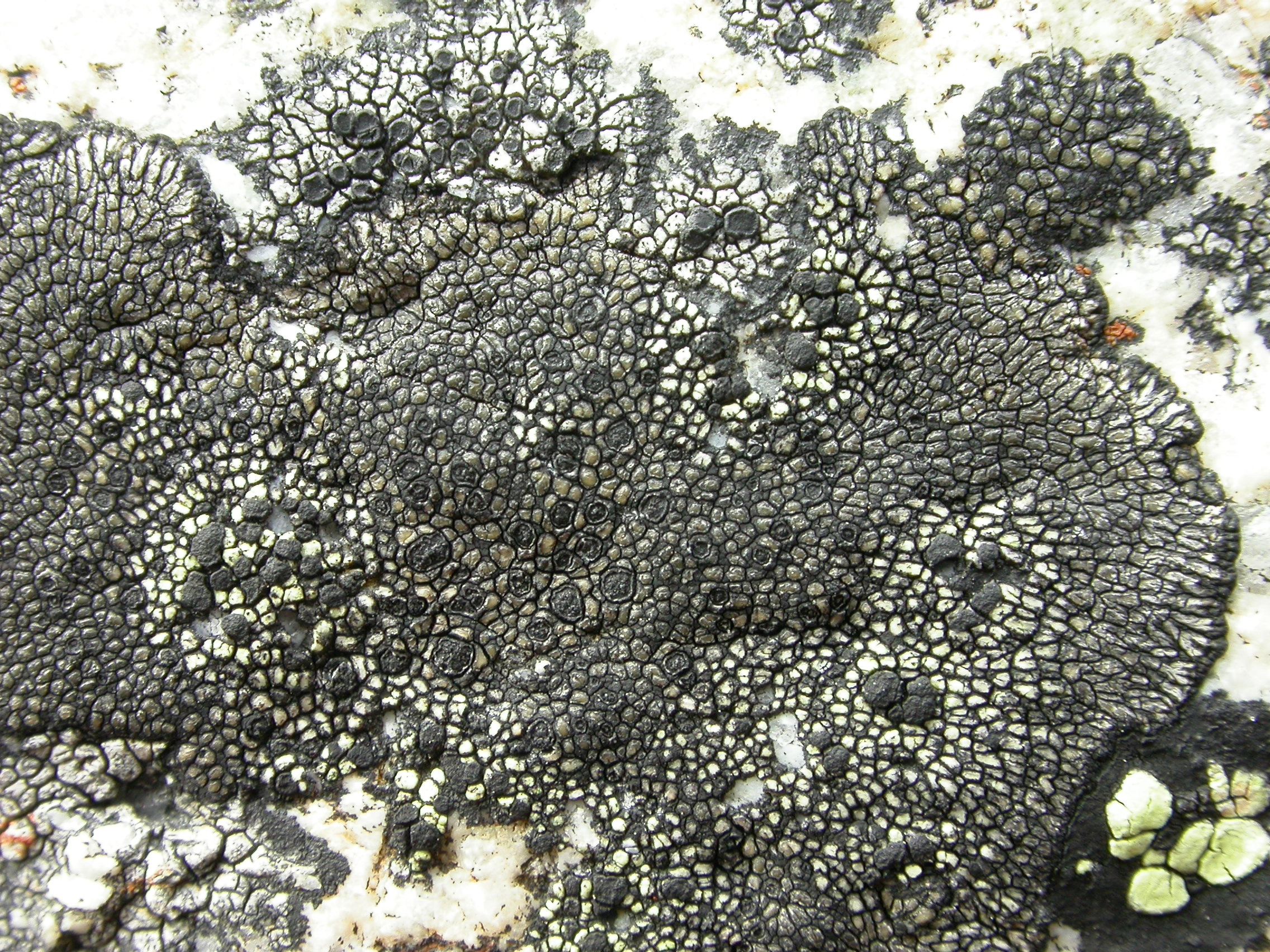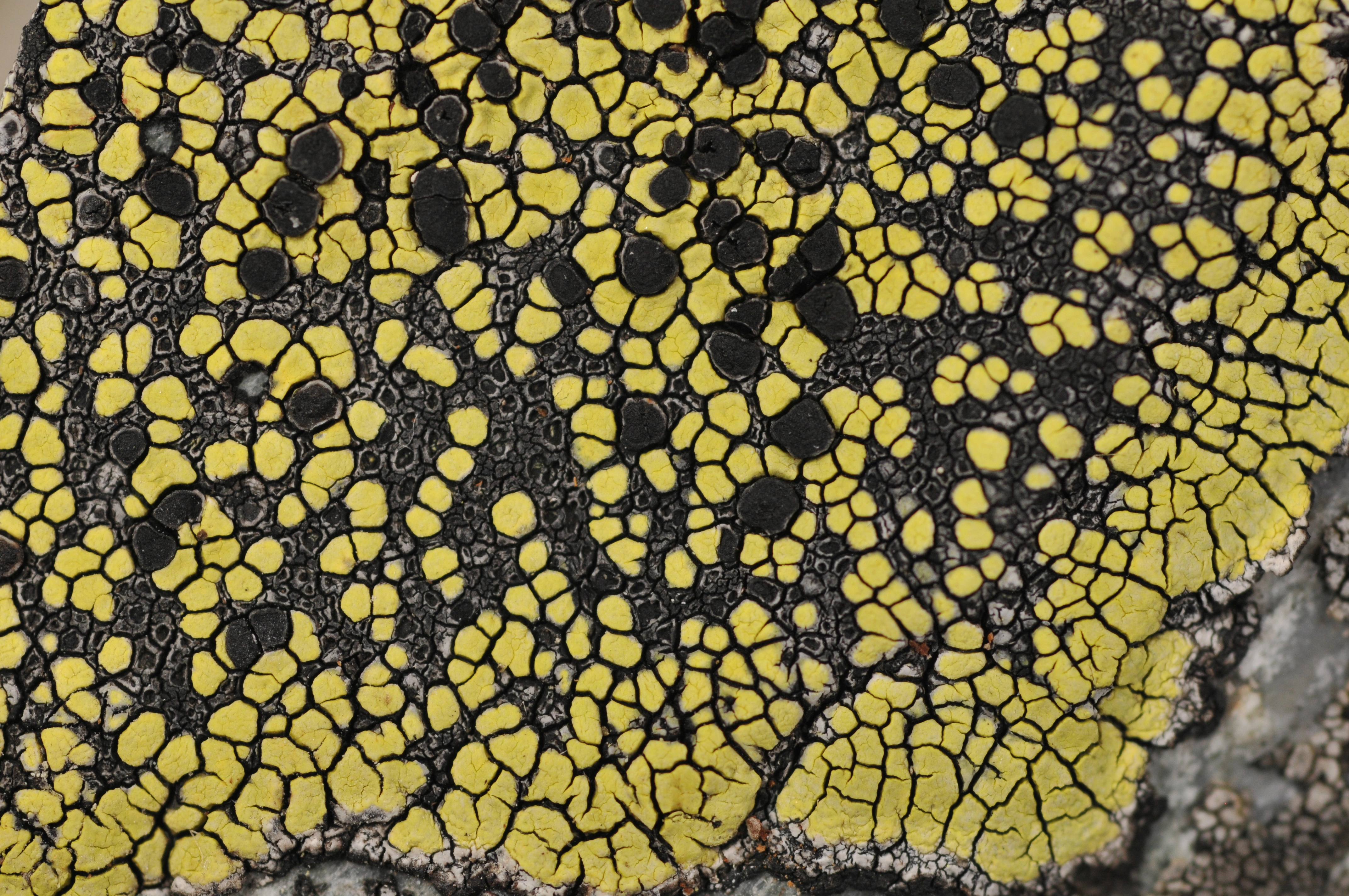Rhizocarpon effiguratum
- Innhold
- Morphology
- Chemistry
- Habitat
- Comment
- Look-alikes
Morphology
Thallus areolate, up to 2 cm diam.; hypothallus well developed, especially along the margin, black; areolae up to 0.7 mm diam., bright yellow, dull to somewhat shiny, contiguous, mostly angular, often slightly elongated and radiating at the margin, plane to strongly convex, smooth or scabrous; medulla KI+ dark violet. – Apothecia up to 0.7 mm diam., black, epruinose, orbicular to angular, plane to weakly convex, indistinctly marginate; excipulum brownish black in the rim, paler in the inner part, K+ faintly red or K–; hypothecium dark brown K–; hymenium colourless; epihymenium brownish black, K+ faintly red; no crystals or granules in the apothecia; ascospores 8 per ascus, 1-septate, dark brown, 9–14 × 4–8 µm. – Conidiomata not seen.
Chemistry
Rhizocarpic and psoromic acid; spot tests: medulla PD+ yellow, K–, C–.
Habitat
On exposed rock faces in the mountains. Rarely collected.
Comment
The name R. effiguratum has been misapplied in Scandinavia, mainly for R. norvegicum, and the species was first correctly reported i 1988. Parasitic stages have not been observed in Norwegian material, although it is often growing in the thallus of Pleopsidium flavum elsewhere. Other yellow species of Rhizocarpon with 1-septate, less than 18 µm long ascospores include mainly R. norvegicum, R. pusillum, and R. superficiale. Rhizocarpon norvegicum forms scattered to confluent groups of areolae, contains stictic acid or no medullary substances, and often grows on species of the Acarosporaceae when young; R. pusillum forms smaller areolae, has a non-amyloid medulla, and remains parasitic in the thallus of Sporastatia testudinea; and R. superficiale has a non-amyloid medulla, contains stictic or norstictic acid, and has no parasitic stages.



